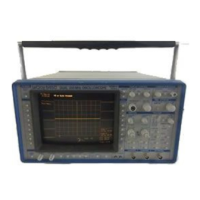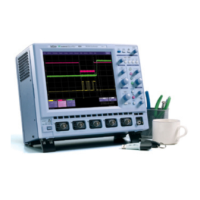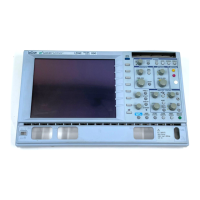About Remote Control
|
|
the instrument might respond as follows:
TIME_DIV 50 NS;C 1:COUPLING D50 (terminator not shown)
The response message only refers to the queries, i.e.
"TRIG_MODE" is left out. If this response is sent back to the
instrument, it is a valid program message for setting its time base to
50 nsec/div and the input coupling of Channel 1 to 50 ~.
Whenever a response is expected from the instrument, the control
program must instruct the GPIB or RS-232-C interface to read
from the instrument. If the controller sends another program mes-
sage without reading the response to the previous one, the
response message in the output buffer of the instrument is dis-
carded.
The instrument uses somewhat stricter rules for response messages
than for the acceptance of program messages, Whereas the con-
troller may send program messages in upper or lower case
characters, response messages are always returned in upper case.
Program messages may contain extraneous spaces or tabs (white
space), response messages do not. Whereas program messages
may contain a mixture of short and long command/query headers,
response messages always use short headers as a default. However,
the instrument can be forced with the command
"COMM_HEADER" to use long headers or no headers at all. If
the response header is omitted, the response transfer time is mini-
mized, but such a response could not be sent back to the
instrument again. In this case suffix units are also suppressed in the
response.
If the trigger slope of Channel 1 is set to negative, the query
"CI:TRSL?" could yield the following responses:
CI:TRIG_SLOPE NEG
header format: long
CI:TRSL NEG
header format: short
NEG
header format: off
Waveforms which are obtained from the instrument using the
query "WAVEFORM?" constitute a special kind of response mes-
sage. Their exact format can be controlled with the commands
"COMM FORMAT" and "COMM ORDER", as explained in
Section ~
|
|
|
|
|
|
|
|
|
|
|
|
|
|
10
|
|

